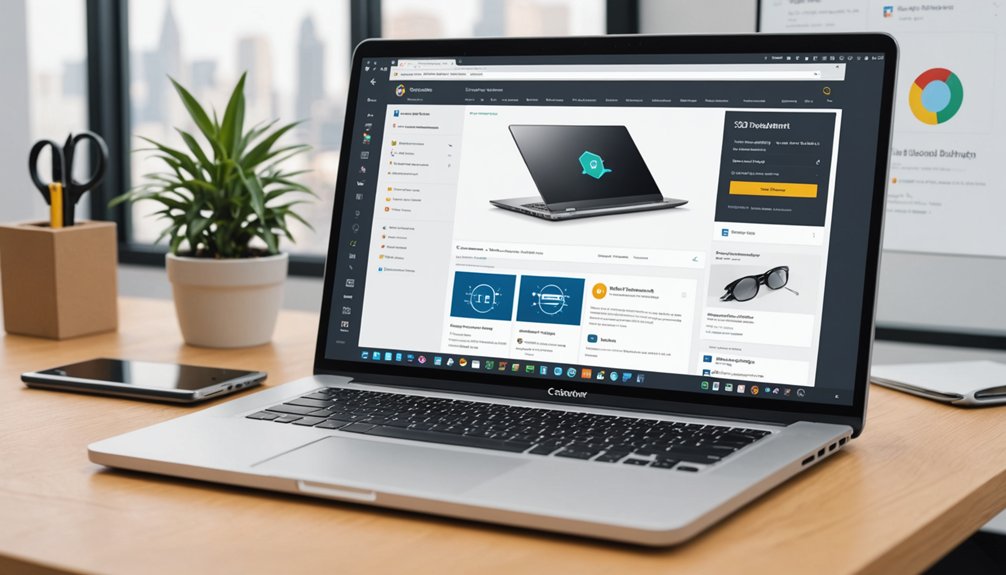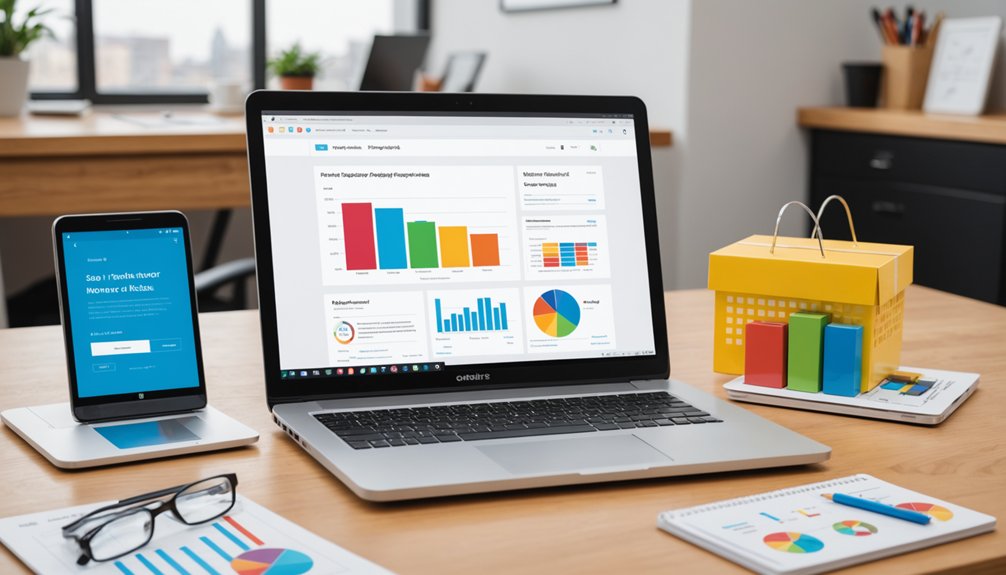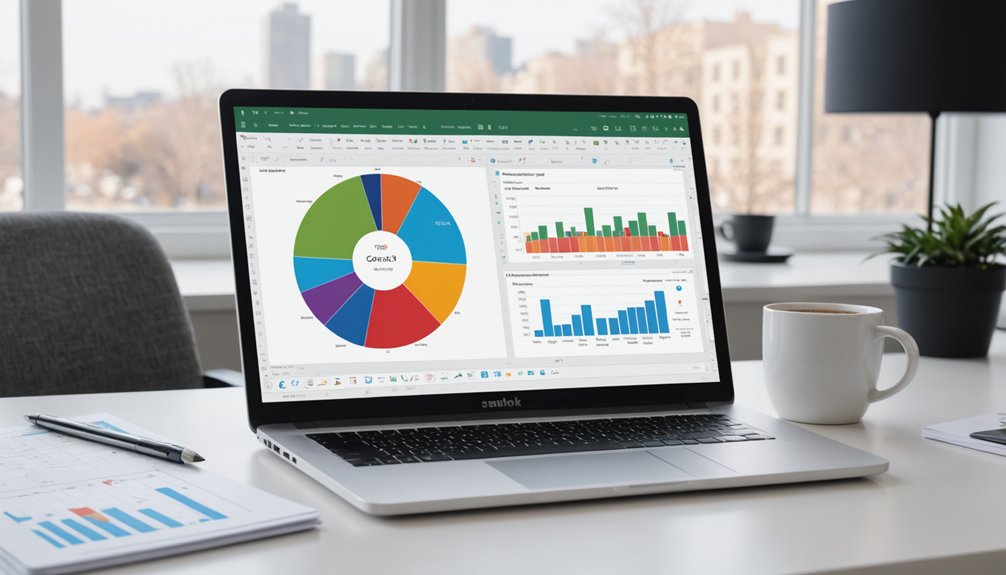Effective e-commerce SEO hinges on five key techniques. First, visibility matters—being stuck on page two might as well be bankruptcy. Smart keyword research separates winners from losers, while clean URL structures prevent customer confusion. Don’t skimp on product descriptions; detailed, keyword-rich content sells. Technical elements like page speed and mobile optimization are non-negotiable. Finally, engagement metrics reveal what’s working. The difference between thriving and diving often lies in these fundamentals.

While brick-and-mortar stores struggle to stay relevant, e-commerce continues to dominate the retail landscape. Online retailers face fierce competition. Everyone wants that coveted first-page ranking. Creating local landing pages for your service areas can help capture regional customers and boost local visibility.
Let’s face it – if you’re not visible, you might as well be selling air. The difference between page one and page two of Google results? Might as well be the difference between Times Square and a deserted alley.
In SEO, invisibility is bankruptcy. Page one is prime real estate; page two might as well be the digital wilderness.
Keyword research isn’t just helpful; it’s essential. Smart e-commerce businesses conduct thorough research to identify relevant terms for product pages. They don’t just guess. They analyze. They implement. Tracking conversion rates helps determine if your keyword strategy effectively drives desired customer actions.
Because showing up for the wrong keywords is like opening a swimsuit shop in Antarctica.
URLs matter more than most retailers realize. Clear, descriptive URLs that reflect product details help both users and search engines understand what you’re selling. Implementing an ideal structure like https://brand.com/category/subcategory/color-product creates a logical path that enhances both user experience and search visibility.
No one wants to click on a mysterious string of numbers and letters. That’s not a URL – that’s keyboard vomit.
Product descriptions can make or break your SEO efforts. Detailed, keyword-rich content improves visibility while actually telling customers what they’re buying. Shocking concept, right?
Add high-quality images and videos, and you’ve got yourself a winning formula. The number of online stores with blurry product photos in 2023 is frankly embarrassing.
Technical SEO isn’t sexy, but it’s powerful. Implementing SSL encryption, submitting XML sitemaps, and using canonical URLs to avoid duplicate content issues are game-changers.
Page speed matters too. A slow-loading page might as well be advertising for your competitors.
User experience can’t be ignored. Mobile-friendly design is non-negotiable. Clear calls-to-action guide users toward purchases.
Personalization enhances engagement. And user-generated content like reviews? Pure gold for both SEO and trust-building. Because people trust other shoppers way more than they trust your marketing department.
Analytics ties everything together. Track performance. Monitor conversion rates. Analyze user behavior.
Without data, you’re just guessing – and in e-commerce, guesswork is a luxury no one can afford.
A strategic internal linking structure helps distribute link equity throughout your site and keeps customers engaged with your product offerings, ultimately reducing bounce rates and improving your search visibility.
Frequently Asked Questions
How Long Does It Take to See SEO Results for E-Commerce Pages?
E-commerce SEO takes time. No magic wand here.
Some results appear fast – 1-3 months for basic fixes. Real improvements? Look at 3-6 months for decent traffic and ranking bumps.
The big payoffs come at 6-12 months. Competitive industries take longer, obviously. Older domains have it easier. Budget matters too.
Fact is, patience pays off. SEO’s a marathon, not a sprint.
Is Mobile Optimization Necessary for E-Commerce SEO Success?
Mobile optimization isn’t just necessary for e-commerce SEO success—it’s non-negotiable.
Google’s mobile-first indexing means websites without mobile-friendly design simply disappear from rankings. Period.
With most shoppers browsing on phones, clunky mobile experiences kill conversion rates faster than you can say “abandoned cart.”
The math is simple: no mobile optimization = no visibility = no sales.
It’s 2023, not 2010. Adapt or vanish.
Should I Prioritize SEO Over Paid Advertising for My Online Store?
It depends. SEO delivers long-term returns with 500-1300% ROI potential. Pretty impressive.
Paid ads? They’re instant gratification – perfect for launches or quick sales.
The smart play is combining both. SEO builds lasting traffic; PPC fills immediate gaps.
Small budget? Focus on SEO fundamentals first.
Big pockets? Do both simultaneously.
Traffic stops when ad spend does. That’s just math.
SEO keeps working even when you’re sleeping.
How Often Should I Update Product Descriptions for SEO Benefits?
Businesses should update product descriptions monthly to maintain content freshness for SEO. Google loves new content. Period.
Some experts suggest quarterly updates work fine if products don’t change often. It’s not rocket science. Regular refreshes signal relevance to search engines.
Seasonal products? More frequent updates. Established products? Maybe less often.
Bottom line: consistent updates matter more than perfect timing. Nobody wants stale content anyway.
Can Customer Reviews Directly Impact My E-Commerce Site’s Search Rankings?
Customer reviews absolutely impact search rankings. They’re SEO gold.
Reviews add fresh keyword-rich content, boost site credibility, and improve click-through rates. Google’s algorithm loves this stuff.
Plus, reviews with schema markup create those fancy rich snippets in search results. Local mentions? Even better for local SEO.
The data’s clear—sites with active review sections typically outrank competitors.
Reviews aren’t just for customers; they’re for algorithms too.




